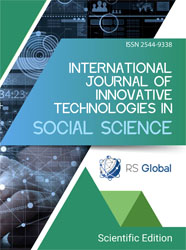FOREIGN DIRECT INVESTMENT IN THE BRICS GROUP DURING THE PERIOD (2011-2021)
Abstract
The BRICS group consists of a set of emerging economies, despite differences in historical backgrounds and development experiences, these countries share the common characteristic of having achieved high levels of economic development and significant economic growth rates over the past two decades, These nations possess key factors that qualify them to hold an important position in global economic relations.
Although the BRICS group has officially commenced its operations, it has yet to evolve into a fully-fledged economic bloc. Its activities have so far been limited to cooperation in economic, financial, and other sectors. Until now, the group has not reached an agreement on the most basic forms of economic integration, such as a free trade area or a preferential trade agreement.
The BRICS countries are among the largest recipients of foreign direct investment (FDI) globally. Despite the relatively low volume of intra-BRICS FDI, there is potential for its growth in the future, making it a crucial tool for strengthening economic relations among the member states.
References
Branco, R. C. (2015). The BRICS:some hisytorical experiances growth chalanges and opportunities. Consulté le 02 04, 2025, sur https://repositorio.fgv.br
C.Princiloo. (2022). Tangibale Economec Cooperation for Sowthe Africa and The BRICS :Taking a Stock and looking forward (Vol. Chapter 9). Palgrave Macmillan.
Unated Nation . (2023). BRICS Investment Report. Unated Nation Conferance on Trad and Development.
UNCTAD. (s.d.). Consulté le 02 25, 2025, sur unctad.org
Word Bank. (s.d.). Consulté le 01 15, 2025, sur https://www.worldbank.org
Views:
56
Downloads:
14
Copyright (c) 2025 Bourekab Nabil, Bellarou Ali, Ghouila Loubna

This work is licensed under a Creative Commons Attribution 4.0 International License.
All articles are published in open-access and licensed under a Creative Commons Attribution 4.0 International License (CC BY 4.0). Hence, authors retain copyright to the content of the articles.
CC BY 4.0 License allows content to be copied, adapted, displayed, distributed, re-published or otherwise re-used for any purpose including for adaptation and commercial use provided the content is attributed.















